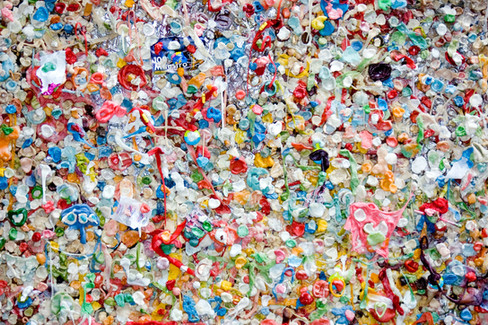UPCYCLING, RECYCLING ?
- Jan 30, 2023
- 3 min read
Updated: Nov 7, 2023
We all tend to confuse the words recyclable, upcycling and recycled. Although they share common points, they do not meet the same definition. This article will explain how to differentiate them well. Recyclable materials A recyclable material must be reintroduced after treatment, in the production of a new product.
The cardboard; The paper; The steel; Metal (e.g. sodas cans); Plastic (PET); Polystyrene; The glass; Some fabrics.
Giving new life to matter: this is the central issue of recycling. While recycling is not the only solution to reducing environmental impacts, it is one of the pillars of the circular economy and is experiencing technological developments that can boost its effectiveness. Recycling has two major environmental consequences: The reduction of the volume of waste, therefore the pollution it would cause (some materials take decades or even centuries to degrade); The preservation of natural resources, since recycled material is used instead of the one that should have been extracted. There are three main families of recycling techniques: chemical, mechanical and organic: So-called "chemical" recycling uses a chemical reaction to treat waste, for example to separate certain components; So-called "mechanical" recycling is the transformation of waste using a machine, for example to grind or separate by eddy currents; So-called "organic" recycling consists, after composting or fermentation, in producing fertilizers or fuels such as biogas.
Recycling for the benefit of humanitarian associations
In France, several associations unrelated to waste have diversified, or have been created, to participate in the collection and recycling of materials or objects, in order to derive sources of financing for actions of general interest and for their routine operation. The first was the National League Against Cancer, with glass recycling after the 1973 oil shock. Since the 2000s, other associations have taken charge of the collection of plugs, especially in plastic (at the time these were not yet exploited by the sectors of local authorities), but also in cork. Collection points are installed in convenience stores and supermarket chains, but also in schools, companies... The caps are collected and then sorted by volunteers, they are then resold to a recycler who incorporates them into new material to make, for example, plastic pallets18. Most of the proceeds are used to offer sports equipment to people with disabilities, or paid to medical research institutes.
A little bit of history
Recycling is used from the Bronze Age. At this time, used metal objects were melted to recover their metal for the manufacture of new objects. In all civilizations, art and the way of "making new with old" exist. For example, old rags, then papers and cardboard, are recovered to make paper pulp. The situation changes with the gradual and then massive development of industrialization and consumption. The management of raw materials and waste is becoming increasingly difficult, the former becoming too scarce and the latter becoming too invasive. Recycling then gradually becomes an issue in the protection of the environment. (Source Wipikédia)
Recycled materials
A recycled material is a used component resulting from waste treatment and reintroduced into the production chain in order to be revalued. Whether it is diverted from its initial use or not (upcycling), it helps to reduce the volume of waste while preserving the planet's resources. This therefore makes it possible to combat pollution and the depletion of natural resources. By reusing raw materials already extracted, some industries are thus part of a sustainable development approach. But to be able to be recycled, a material must be selectively sorted, which is largely based on consumer involvement. Indeed, only the glass bottles you place in a recycling bin can be used for the manufacture of new containers. Waste recovery is a major issue in industry and including in the textile industry, for example. Indeed, the latter is the second most polluting sector in the world, after oil exploitation and before the automotive industry. Each year, it swallows 93 billion cubic meters of water and 98 billion tons of non-renewable resources for the manufacture of synthetic fibers.
Some figures on the extent of clothing waste:
4 million tons of clothing waste is disposed of every year in Europe; 80% of the garments thrown away end up in landfill or incinerated. 70% of the clothes that make up our wardrobe are not worn. On average, clothes are worn 7 to 10 times. Every year, the French buy about 9 kilos of clothes per person and give the equivalent of 3 kilos. The equivalent of a clothing dumpster is thrown every second into the world. (Source: Novethic / Oxfam)
Upcycling
Upcycling literally means "recycle from above". Create new with old, without transforming or distorting the raw material used. Concretely, the idea is to recover all kinds of materials that are no longer used to create high-quality objects or products. When we upcycle, we "upgrade".
Some examples of upcycling with brands GOOD&MOJO, ALI LAMU, QUOTE CPH, TREK LIGHT GEAR, MOOGOO
Boat sails
Fabrics
Sari Metal futs Pneus






































